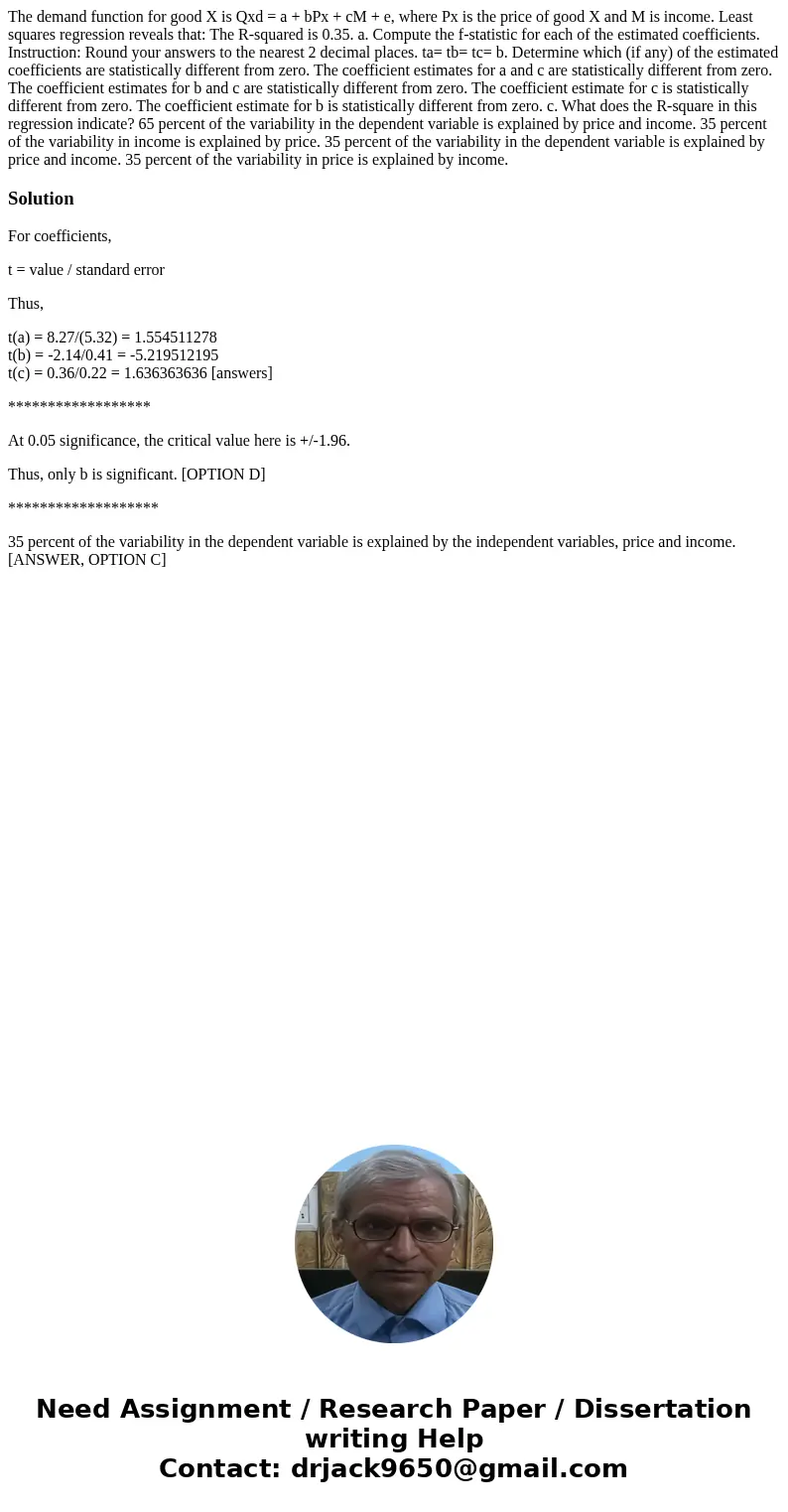The demand function for good X is Qxd a bPx cM e where P
The demand function for good X is Qxd = a + bPx + cM + e, where Px is the price of good X and M is income. Least squares regression reveals that: The R-squared is 0.35. a. Compute the f-statistic for each of the estimated coefficients. Instruction: Round your answers to the nearest 2 decimal places. ta= tb= tc= b. Determine which (if any) of the estimated coefficients are statistically different from zero. The coefficient estimates for a and c are statistically different from zero. The coefficient estimates for b and c are statistically different from zero. The coefficient estimate for c is statistically different from zero. The coefficient estimate for b is statistically different from zero. c. What does the R-square in this regression indicate? 65 percent of the variability in the dependent variable is explained by price and income. 35 percent of the variability in income is explained by price. 35 percent of the variability in the dependent variable is explained by price and income. 35 percent of the variability in price is explained by income. 
Solution
For coefficients,
t = value / standard error
Thus,
t(a) = 8.27/(5.32) = 1.554511278
t(b) = -2.14/0.41 = -5.219512195
t(c) = 0.36/0.22 = 1.636363636 [answers]
******************
At 0.05 significance, the critical value here is +/-1.96.
Thus, only b is significant. [OPTION D]
*******************
35 percent of the variability in the dependent variable is explained by the independent variables, price and income. [ANSWER, OPTION C]

 Homework Sourse
Homework Sourse